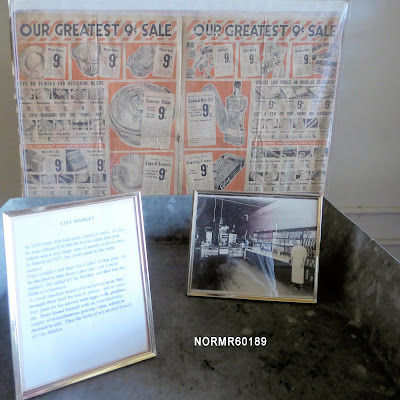 |
| Sealing tape applied over a roof seam - EPDM roof on left, fiberglass cap on right |
![]()
Roadtrek and Other RV Leaks Repairs
In the social media and FMCA groups that I belong to, monitor or administer, a variety of exterior RV leaks have been discussed and there is the occasional call for solutions. Such leaks can be an issue in any type of RV. Loose or leaking roof window "ports", damage to the roof, and so on could occur in my Roadtrek. I've thought about this and about how to deal with this on a temporary basis, if it occurs during a trek? I've even considered how to deal with a side window hinge problem, should it occur. I've prepared for this, but knock on fiberglass, I have yet to have an exterior leak in the 210P.
One of the things I've carried in the Roadtrek since 2017 is a roll of 4 inch wide Eternabond tape. This is suitable for temporary repairs as well as more permanent repairs. This post looks into such a repair.
 |
| 4 inch wide 20 ft. roll |
I carry this tape because I decided it is a great way to deal with roof leak problems on a variety of RV roofs and I consider this important while we are trekking. I would use it as a temporary side hinge window repair on my 210P. The 210P has a fiberglass roof, and those three characteristic windows on the front of the roof, and so far, so good. But I've had neighbors in campgrounds who weren't so fortunate. At one campground a large branch detached from a tree and came down. It did not hit my rig, but if it had, I'm sure it would have created a crack in the fiberglass shell, or worse. That would have been the source of a roof leak. Keeping water out of the interior of the rig is important.
I purchased a 4 inch x 20 ft. roll, which is sufficient for perceived emergency repair needs, and carry it it in the 210P. The 4 inch width does set limitations, but a larger problem can be dealt with by lapping the tape. Such a lapped application could be 7 inches wide. This would be a "temporary" solution which could get me through the issue and not disrupt a trek. When we are trekking my goal is to complete the trek and deal with maintenance issues later, under controlled circumstances when we are not "wherever". So, I carry repair essentials because I prefer to avoid a diversion to deal with repairs while on a trek. I carry spare parts and solutions with me to deal with identified, potential problems. Eternabond tape is one such solution.
Since 2013, this approach, coupled with a vigorous preventative maintenance program has worked well for us. We have yet to have a trek interrupted because of any type of mishap or failure. Of course, there will be a first time, but not yet!
I have used some of the roll of tape for non-Roadtrek repairs as a seam sealer, and for other repairs unrelated to RVs, including a cracked plastic drain pipe. However, the exterior of that pipe was clean and the pipe was under no pressure, with gray water flowing within via by gravity.
This post looks at a very recent RV roof repair, using such tape.
The word Eternabond makes one think of the word "eternal" and yes, it can be a long lasting bonding tape, when properly applied to a solid, non-porous, dry, clean and prepared surface. Keep in mind that the bond and seal of the tape is only as strong and effective as whatever it is attached to.
Be aware, it is really sticky and takes some care when handling. It has a bright white top layer over a gray sticky layer. When unrolled the sticky layer is protected by a thin, clear plastic backing. Removing the backing will expose the sticky part. Once that backing is removed the tape will readily stick to anything it gets in contact with and it will pick up dirt and grit. Of course, any extraneous detritus will reduce the seal and bonding ability of the tape.
Applying takes a little care. Because the tape is "semi-permanent" and super-sticky one has to exercise some care when applying. Don't let the sticky side touch anything except the area you want to apply it to!
One should read and follow the manufacturer's directions for best results. Be aware, Eternabond tape can't stick to everything and surfaces should be thoroughly cleaned. I've experimented and I can say it works, but I wouldn't attach to porous surfaces, loose surfaces, rusty pipes, unsealed wood, etc. Keep in mind that the Eternabond seal is only as strong and effective as the surface to which it is attached.
There are lots of YouTube videos to watch, too. Some are great at showing what not to do, or misapplication. Here's a brief promotional video by the Eternabond manufacturer:
Application Example - RV Roof
I recently used the tape to make a waterproof repair on a travel trailer roof. I wanted to make a roof seam waterproof. This was a preventative maintenance step. This post provides some idea of how the tape works.
I did this on a warm, dry 78F day. There is an upper temperature limit recommendation for application of the tape, and I wanted to be comfortable. Some of the work was done under cloudy-partly cloudy conditions.
 |
| Seam to be cleaned and made waterproof with sealing tape |
I noticed that the lap seal at the fiberglass seam cover on the roof was developing cracks. I decided to remove the old lap-seal sealant and replace it. If I was going to do this, I also decided that I'd improve the waterproofing in the area of the membrane roof nearest to the fiberglass seam cover. I prefer to make long term repairs, rather than apply short term band-aids. The simplest repair would have been to clean and then apply a liberal amount of "self-leveling" lap sealant. But I avoided that temptation.
I polish the fiberglass nose cap of our summer TT "cabin" each spring, but I didn't want to apply sealant over wax, so I cleaned the cap, removing wax, all dirt, etc. in the vicinity of the area I would apply the tape. I'll later polish the cap.
The area of the EPDM roof also needed to be cleaned prior to using lap sealant or sealing tape. To do this I washed it, scrubbed it gently (no metal brush allowed) and then "scrubbed" again with denatured alcohol. The roof is a EPDM membrane and this, I understand can be damaged if cleaned with petroleum based products. Alcohol works and leaves no residue, so that was my choice for final cleaning.
After an initial cleaning I removed all of the old lap sealant with a plastic putty knife. I prefer a plastic scraper as I am concerned about damaging or puncturing the roof membrane:
 |
| Using a plastic putty knife to remove lap sealant |
My goal was to fill the void and obtain a waterproof seal where the membrane roof meets the fiberglass nose of the travel trailer. To accomplish this I decided to apply non-sagging lap sealant and fill the cover the cap completely.
 |
| Partially removed lap sealant at cap covering the seam - before cleaning |
After removing the old sealant, I thoroughly cleaned the area. I cleaned with soap and water, brushing lightly to remove debris while avoiding damaging the roof. To remove plant residue and mold, hydrogen peroxide and Dawn soap mixture in water works well, in my experience. I use it to clean the awning, too.
After drying, I use denatured alcohol scrub as a final cleaning step. It is my understanding that petroleum based products can be harmful to membrane roofs, so I avoid them.
 |
| Denatured Alcohol as a cleaner |
I then applied non-sag lap sealant to the both sides of the seam cover where it meets the roof. It took about half a tube. I allowed 24 hours for the non-sag to set up, in the sun, before proceeding.
 |
| Ready for polishing the fiberglass nose cap |
Next, a good roof and awning cleaning.
I'll be cleaning the roof next, using a low pressure hose and soft brush. We're under trees and the conifers are dropping pollen. Any additional roof maintenance beyond cleaning will occur after the air has cleared.
Original Material http://Roadtrek210.blogspot.com









































